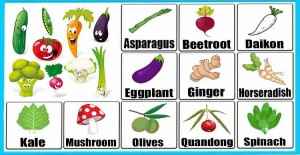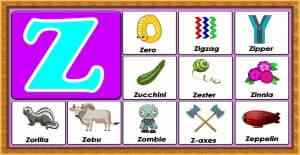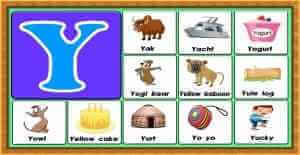Fruits Name For Kids
Learning fruit vocabulary is an essential part of instilling good eating habits in youngsters. You’ll discover entertaining games and activities to teach fruits name for kids right here!
Learning Fruit names for kids
Some are sweet, while others are sour, but they’re all great healthful snacks. Fruits are one of nature’s miracles; there are many varieties, and they come in a variety of forms and sizes, so there’s something for everyone! Bananas may become a favorite of your children if they prefer sweet snacks. Apples are also a fantastic option if they want something more crunchy! Fruits are also a lot of fun to consume because they come in a variety of colors, flavors, and textures.
Fruits are not only yummy, but they are also highly healthful! They are ideal for children because they include dietary fiber, which aids in the absorption of minerals from meals; vitamins, which assist in improving their immune systems; and some of the elements required for a child’s healthy growth. It’s a good idea to start including different types of fruit in your child’s diet at a young age. They’re delicious as treats and a good approach to boost your energy levels.
Fruit education benefits children’s vocabulary and cultural understanding as well as their nourishment. Especially since many other fruit alternatives are unique to different world regions, such as the Blue Java Banana from Hawaii, which tastes like vanilla ice cream, or the jackfruit from South Asia, which is said to taste like an amalgamation of pineapple and bubblegum. Learning fruit names can be a lot of fun for kids to learn, so here’s a list of English fruit names to practice with your kids!
A to D Fruit Names for Kids
Apple: The apple is a fruit that increases on the apple tree and is meaty. The fruit is available in a variety of forms and sizes. Apples are available in a wide variety and come in various colors, including red, yellow, orange, and green.
Apricot: Apricots are smooth-skinned orange or reddish fruits. The rose family is represented by the trees on which they grow. Apricot trees have wide, spreading leaves that are brilliant green and oval. In the spring, apricot trees produce little white or pink blooms. These blossoms give rise to the fruits.
Banana: Bananas are the fruit that various banana trees produce. They are generally long and curved when ripe, with a soft inside protected by a golden covering (peel). Bananas come in a variety of hues, including red.
Simple Fruits Name For Toddlers
Blueberry: Blueberries are little, dark blue shrubs that produce small, dark blue fruits. They have a moderately acidic flavor and can be eaten raw or cooked into baked items and preserves. They’re high in vitamin C, A, and iron.
Cantaloupe: Cantaloupe is a tiny muskmelon with highly netted skin and generally orange flesh that is commonly produced.
Cherry: Cherries are tiny, spherical fruits with a sweet or tart flavor. They’re found on trees that are likewise famed for their blossoms. As a result, cherry trees may be found all over the world.
Dates: Little, delicious fruits grow in big bunches on palm trees called date palms. A single bunch of dates can contain up to 1,000 dates. Dried dates contain a lot of sugar—at least half of their overall weight is sugar.
Dragon fruit: This is a fruit native to Central and South America, as well as Asia. It has a mild sweet flavor, a vibrant form and color, and a texture between a kiwi and an apple. So, It includes a lot of water, other critical minerals, and various nutritious elements. It is pleasant and refreshing.
E to H Fruit Names for Kids
Egg Fruit: The egg fruit tree reaches around 8 meters tall and produces oblong fruits 7 to 12 cm long. The fruits come in various shapes, with some having a straight pointed end and others having a curved tip. When fully mature, the Egg Fruit assumes a golden-orange hue with rusty brown blotches that do not indicate the quality of the interior meat.
Elderberry: Elderberry is a plant that has been used for hundreds of years for various medical uses. The plant’s berries are high in vitamins and minerals, including Vitamin C and fiber.
Finger Lime: In the coastal border area of Queensland and New South Wales, Australia, finger lime is a thorny understorey shrub or tiny tree of lowland subtropical rainforest and rainforest. It produces edible fruits that are being researched as a commercial crop.
Fig: This little pear-shaped fruit is harvested from trees and has a chewy texture and a sweet flavor. Its tree thrives in hot, dry environments.
Grape: Grapes are round fruits with a bulbous form. They can be eaten raw, dried to form raisins, or crushed to make wine or grape juice. Grapes may be found in both forested and warm climates across the world.
Grapefruit: Grapefruit is a citrus fruit that grows on trees and is tangy and juicy. It contains a lot of vitamin C. Grapefruit gets its name from the fact that it grows in bunches like grapes.
Honey melon (HoneyDew): The form of honeydew is round to slightly oval. The smooth peel is generally greenish to yellow in hue, while the flesh is usually pale green.
I to L Fruit Names for Kids
Imbe: Imbe is a traditional African food plant that is less well-known. They are mostly produced for decorative purposes, but they are occasionally consumed. Flowers are produced in groups on the stalks. The fruit is tiny and vivid orange in color, with a diameter of around 1-4 cm. The fruit of this thin-skinned berry with a single big seed is highly delicious yet acidic and includes latex.
Jackfruit: The scent of jackfruit is distinctively sweet and fruity. The fruit’s insides have been described as smelling like pineapple and bananas. The seeds can be roasted and used as a commercial substitute for chocolate aroma. The fruit’s flesh is starchy and fibrous, and it contains dietary fiber.
Learn Easy Fruits name
Jambolan: Jambolan is a kind of tree. Medicine is made from the seed, leaf, bark, and fruit. Jambolan is a common traditional remedy for diabetes.
Jujube: Jujube trees are little, spiky trees that belong to the genus Jujube (Zizyphus). They’re planted for their leaves and small, brown, meaty, oval fruits, which may be eaten fresh, roasted, or preserved and are used in sweets. The trees can only be found in tropical areas.
Kiwi: It is oval. On the inside, it’s green with tiny black seeds that may be eaten. The hairy brown skin of the kiwi is edible, but it is usually removed. The epidermis is relatively thin.
Lychee: A lychee is a tropical fruit belonging to the Litchi genus. It’s from the south of China. It can only grow in a warm, damp climate since it is tropical. Lychee’s inside is a clear pinkish-white color. The fruit has a hard, prickly shell on the outside. Lychees have a sweet flavor and can be frozen, used in sauces, jams, purees, and preserves. The lychee tastes like sorbet when frozen.
M to O Fruit Names for Kids
Mango: A mango is the lovely fruit of a tropical tree that grows in tropical climates. The mango tree belongs to the sumac (or cashew) family of trees. Mango trees were initially seen in India and eastern Asia. However, the tree is now grown in both the Americas and Africa.
Mangosteen: Purple mangosteen is a tropical fruit native to Southeast Asia’s jungles. It can only be found on evergreen trees. It’s a tropical fruit that’s popular. It is well-known for its sweet, juicy, and tangy flavor.
Nectarine: Nectarines are smaller than peaches and have a harder texture with a sweet, delicious flavor. They’re a bright golden yellow with crimson flushes. Their flesh has a pink tint to it and is yellow.
Olive: The olive is the olive tree’s fruit. It is a significant food crop in Italy, Spain, and other Mediterranean nations, particularly Greece. It’s a nutritious dish, but it’s also somewhat fattening. It contains olive oil, one of the fattiest cooking oils. The liquid obtained by crushing olives is known as olive oil. It is said to be a healthful substitute for sunflower oil.
Orange: People frequently consume oranges, which are a sort of citrus fruit. Vitamins, particularly vitamin C, are abundant in oranges. Thus, for many individuals, orange juice is a vital element of their morning routine. The “sweet orange,” the type most commonly consumed today, originated in Asia but is now found in many world regions.
P to Q Fruit Names for Kids
Papaya: Papaya is the edible fruit of a tall herbaceous plant belonging to the genus Carica. It is found in the tropics of America, primarily in southern Mexico and Central America. These plants are now grown in every tropical location on the planet. Papayas are tropical plants that require a warm temperature for development and fruit production. They are unable to survive in cold temperatures.
Pear: Pears are similar to apples in that they grow on trees and have little seeds. They’re a fantastic source of fiber and vitamin C. They’re accessible all year, but they taste best in the fall and winter. Pears can be canned or processed into pear butter.
Peach: Peaches are also known as stone fruits because their seeds are enclosed in a hardwood shell known as a stone or pit. A peach’s skin is orange or yellow in hue and coated with tiny hairs known as peach fuzz. A peach’s inside is golden in hue. It has a sweet and sticky flavor. Peaches are frequently used in desserts as a result of this.
Pomegranate: Pomegranate seeds are a sight to behold. They’re gleaming and bright crimson, making them the ideal fruit for the holidays. They’re lovely and tangy at the same time, as well as juicy and crispy. The best part is that pomegranates are high in vitamin C and antioxidants. They’re thought to help maintain a healthy heart.
Quince: The quince is a tiny tree that bears fruit. It’s a member of the same fruit family as apples and pears. It begins off the green and soon turns a beautiful golden yellow color, giving it the appearance of rough lemon. The quince fruit is quite difficult to consume. However, It may be boiled to soften it.
R to T Fruit Names for Kids
Rambutan: The rambutan fruit (Nephelium lappaceum) is a Southeast Asian tree. Rambutan is the name of the fruit that grows on the tree. The term rambutan literally means “hairy.” The fruit does appear to be hairy. When the fruit is not quite ripe, it is green in color. The outside of the fruit becomes crimson when it is fully ripe. The flesh of the rambutan on the interior is white in hue.
Star Fruit: Star fruit, also known as carambola, is a sweet and sour fruit with a five-pointed star form. The peel is edible, and the meat has a mild, sour flavor that makes it versatile in cooking. The hue of the star fruit is yellow or green. There are two sorts of it: a smaller, sour variant and a larger, sweeter one.
Strawberry: A strawberry is a plant that produces edible fruit. Strawberry fruit is rose in color when mature and bears edible seeds on the exterior. Strawberries are popularly served with ice cream or dipped in sugar. Strawberries are high in manganese and vitamin C. Strawberry fields produce a lot of strawberries, and the farmers frequently keep beehives on the property to pollinate the strawberries.
Fruit Names For Toddlers
Tamarind: The tamarind tree is an evergreen tree endemic to Africa. It is commonly grown as an attractive tree and for the tasty fruit, it produces. A plump pod with up to a dozen big, flat seeds in brown pulp is the fruit. In Asia, the fruit is utilized in cuisines, beverages, and medications.
Tomato: Tomatoes are a delicious red fruit that resembles a large berry. The majority of tomatoes grow on vines, while a few varieties grow on bushes. Many people believe that tomatoes grown on vines have a greater flavor, and such varieties are more widespread.
U to W Fruit Names for Kids
Ugli Fruit: A citrus fruit known as an ugli is a kind of citrus fruit. It’s a member of the lemon family. Because of its unattractive look, Jamaicans dubbed it the “ugli fruit.” It was brought to the United States and South America on cargo ships, and its popularity only expanded after it landed in the Americas. It’s thought that the original fruit was a cross between the Seville orange, grapefruit, and tangerine families.
Vanilla: Vanilla is used to flavor ice cream, cakes, cookies, and various other foods. So, Vanilla is made from beans that grow on select orchid species in warm climates. Vanilla is produced in great quantities in Madagascar, Indonesia, and China.
Watermelon: A watermelon is a huge, oval fruit with green skin and seeds, as well as sweet, juicy flesh. Although red watermelons are the most frequent, other hues such as orange, yellow, and white are also available. Watermelons are related to cucumbers, squash, and pumpkins and contain 92 percent water.
Wolfberry: The goji berry, also known as the wolfberry, is a brilliant orange-red berry that grows on a Chinese shrub. Goji berries have been consumed in Asia for millennia in the hopes of prolonging life. So, Goji berries have been utilized to cure various ailments, including diabetes, high blood pressure, fever, and age-related eye difficulties. Goji berries are using in herbal teas, juices, wines, and medications and are considered a “superfood” by some. They may be eaten fresh, roasted, or dried (like raisins).
X to Z Fruit Names for Kids
Xigua: Xigua is a word used for watermelon. The Xigua Fruit’s Health Benefits The melon Xigua is common throughout Africa. Nutritional information and health benefits for Xigua Fruit. Watermelon is how Americans refer to Xigua.
Yangmei: Yangmei fruit trees are evergreens that produce reddish spherical fruit that resembles a berry, hence the Chinese strawberry moniker. However, the fruit is a drupe, similar to cherries, rather than a berry. This indicates that the fruit has a solitary stone seed in the middle, surrounded by delicious flesh.
Yellow Plum: When fully ripe, the yellow plum is delicious and abundant in sugar. It includes a variety of vitamins and minerals, including vitamin A and potassium.
Zest: Chefs scrape the outer peel of a lemon or orange into their meals when they wish to enhance acidity and tanginess.
Zinfandel Grapes: Zinfandel is a black-skinned wine grape varietal. When it comes to the origin of Zinfandel grapes, the study team at UC Davis came to a different conclusion.
Conclusion
We hope that this lesson on fruit names help your kid learn new fruit names. Please come back to learn some vegetable names in the next lesson.



0 Comments